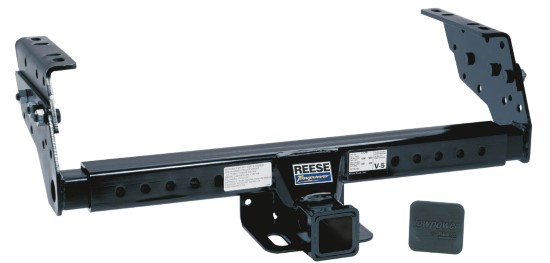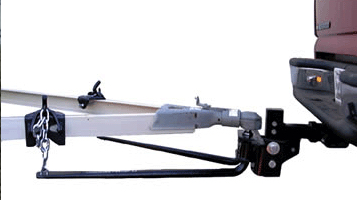How to Choose the Right Tow Vehicle
For many people, buying a boat also means investing in a tow vehicle. Should it be four-wheel drive or two? Can a mid-size V-6-powered truck or SUV handle the boat and trailer or does she need a V-8? Let’s look at the different criteria that should be considered when shopping for a tow vehicle.
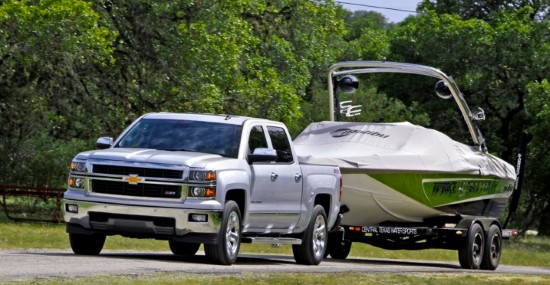
Know the Jargon. Tow ratings typically show the maximum for vehicles with specific equipment, but always confirm with the manufacturer before making a purchase. Following are the terms a buyer should know when choosing a vehicle.
- Gross Combined Weight Rating (GCWR): The total allowable weight of the truck, the trailer, the cargo in each, fluids and occupants.
- Gross Vehicle Weight Rating (GVWR): The total allowable weight for the vehicle, including fluids, options, occupants, cargo and trailer hitch weight. The trailer’s GVWR is sometimes referred to as Gross Trailer Weight Rating.
- Gross Axle Weight Rating (GAWR): The total allowable weight on any given individual axle. Note that this includes the weight of the tires, wheels, brakes and axle itself.
- Maximum Tow Rating is the vehicle manufacturer’s weight limit for towed loads. For conventional trailers, this normally includes a hitch-weight limit as well. The GVWR and GAWR for all motor vehicles are listed on the data plate, which is usually found on the driver’s door frame, glove box or other easy-to-access location. Remember that these figures are limits and that exceeding them towing will, at the least, void the vehicle warranty and at the worst over-stress the engine, transmission and other equipment.
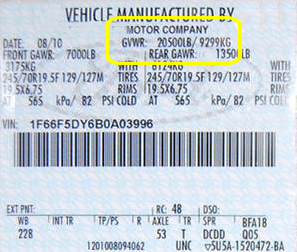
Do-It Yourself. The best way to know how much a boat and trailer weigh is to take them to a truck scale, disconnect from the vehicle and write down the weight. When trying to determine how much a potential vehicle needs to be able to tow, remember to include the weight of fuel and gear kept aboard. When relying on the towing capacity figure, get more truck than necessary. If a boat and trailer weigh 8,000 lbs. (3,628.7 kg) together, get a truck that can tow 10,000 lbs. (4,535.9 kg).
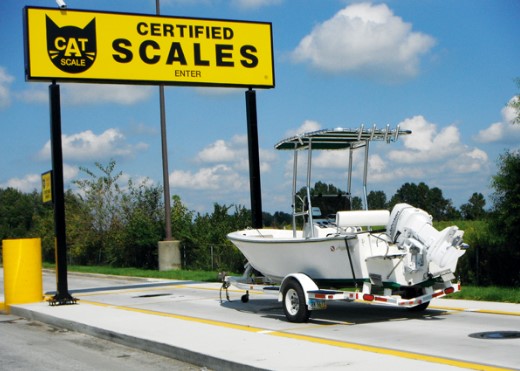
Do the Math. Following is an exercise for determining if a given tow vehicle would work. Consider a fictional one-ton extended cab, 2WD gasoline-burning pickup. Let’s assign it a GVWR of 9,900 lbs. (4,490.6 kg) a GCWR of 23,000 lbs. (10,432.6 kg) and a maximum tow rating of 17,000 lbs. (7,711.07 kg). Pickups similar to this usually start at approximately 6,000 lbs. (2,721,6 kg). With a full tank of fuel and a trailer hitch, the weight goes up to 6,500 lbs. (2,948.4 kg). Add two people at 175 lbs. (79.4 kg) each and some cargo, and the weight goes up to 7,000 lbs. (3,175.1 kg).
The maximum tow rating cannot apply with the truck fully loaded because the GCWR (23,000 lbs./10,432.6 kg) minus the GVWR (9,900 lbs./4,490.6 kg) leaves 13,100 lbs. (5,942.06 kg)— about two tons less than quoted towing ability. After adding options and people to the example truck, and subtracting that value (7,000 lbs./3,175.1 kg) from GCWR (23,000 lbs./10,432.6 kg), the effective working tow rating of the truck becomes 16,000 lbs. (7,257.5 kg), about 1,000 lbs. (453.6 kg) less than the truck’s quoted maximum towing rating.
Middleweight Contenders. Now let’s check out the ratings for some vehicles. The Toyota Tacoma and Nissan Frontier are considered mid-sized pickups and have tow ratings of 6,400 (2,903 kg) and 6,630 lbs. (3,007.3 kg), respectively. The Toyota 4Runner and Nissan Pathfinder SUVs check in at 5,000 lbs. (2,268 kg) and 6,000 (2,721.6 kg). The Ford Explorer is also rated at 5,000 lbs. (2,268 kg) while the Chevrolet Traverse checks in at 5,200 lbs. (2,358.7 kg). The Dodge Durango is a little larger and is rated for hauling a maximum of 7,400 lbs. (3,356.6 kg).
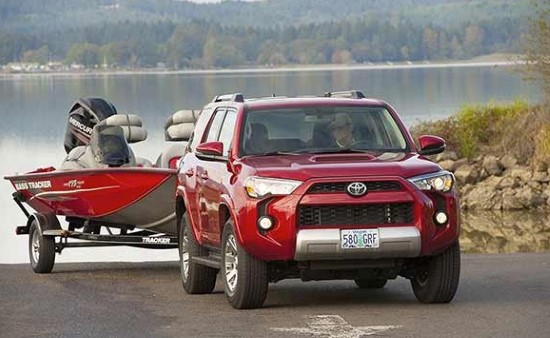
Heavyweight Power. Ford, Chevy, GMC, Ram, Nissan and Toyota all make full-sized half-ton trucks that have maximum tow ratings that range from 9,390 lbs. (4,218.4 kg) for the base model Nissan Titan to 12,500 lbs. (5,669.9 kg) for the Ford F-150. These all have gasoline burning V-8s and are available with full crew cabs or shorter extended cabs, which gives them a realistic passenger capacity of four or five people. The Ford Expedition (9,200 lbs./4,713.05 kg. max towing), Chevrolet Suburban (8,000 lbs./3,628.7 kg.), Nissan Armada (8,500 lbs./3,855.5 kg.) and Toyota Land Cruiser (8,100 lbs./3,675 kg.) are full-size SUVs with available third-row seating if extra passenger capacity is needed.
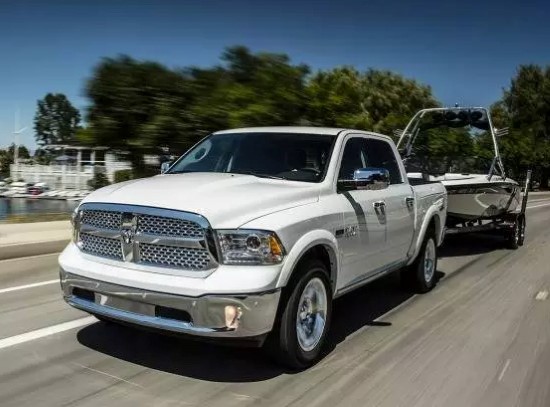
Super-Sized. Ford, Chevrolet/GMC, and Ram all offer heavy-duty models with 2500 or 3500 series badges, or F250 or F350 badging in the case of the Ford. The GMC 3500 HD is rated to tow 23,000 lbs. (10,433 kg), while the Ford F350 can haul 21,000 lbs. (9,525 kg).
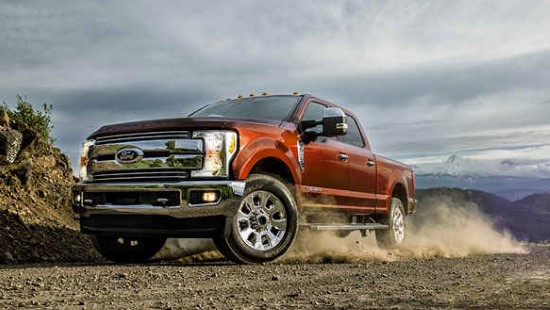
Engine Choices. Most experts agree that in gas engines, a V-8 is the minimum required for towing. Ford’s F150 is available with the turbocharged EcoBoost V-6 in 2.7-liter and 3.5-liter versions, but for the maximum towing weight of 12,000 lbs. with the F-150, an owner would need the 5.0-liter V-8. Most heavy-duty trucks are also available with optional diesel engines.
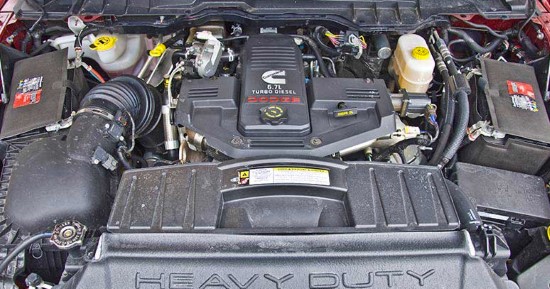
Torque is more important than horsepower. For tow vehicles, torque refers to the strength of the crankshaft rotation and its resistance to torsional loads. The more torque a truck has, the easier it can tow a boat and trailer. If two trucks offer the same amount of torque, look deeper. Find out where that engine makes its peak torque. If one makes it at 3500 rpm and another makes it at 4500, the former will be more drivable and will be a more capable hauler.
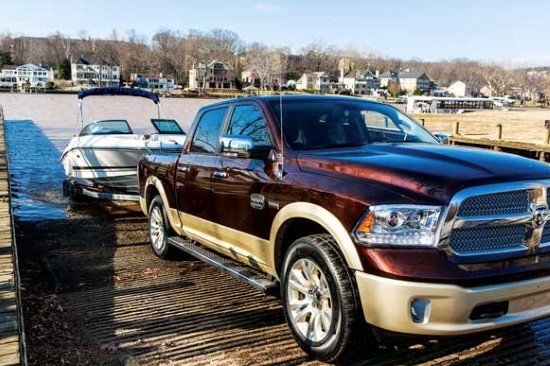
For a transmission, overdrive helps save fuel when towing. Virtually every truck has a towing/hauling mode that lets the transmission hold a gear longer before upshifting and keep it out of top gear if that is what load and driving conditions dictate. Using the towing mode will keep that transmission healthy.
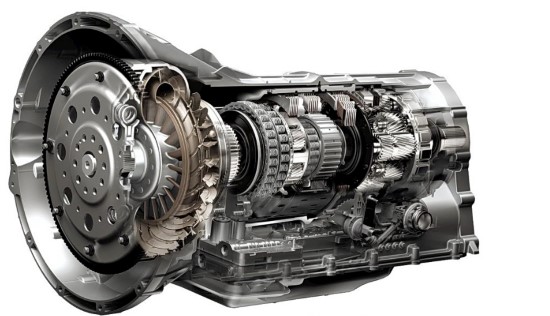
Gear Ratio. The Rule of thumb for axle ratios is the heavier the trailer being towed, the lower the ratio. If a boat and trailer weigh 5,000 lbs. (2,268 kg), a 3.73:1 rear-axle ratio would be sufficient. For 10,000-pound (4,535.9 kg) boat/trailer combination, a 4.10:1 or 4.30:1 ratio would be better. For most towing applications, choose at least a ratio of 3.50:1.
Two or Four? Most people would expect that a four-wheel-drive vehicle can tow more, but that’s actually not true. Engaging the second axle takes more power and that reduces the amount available for towing. If it’s not needed for something like getting up a steep or muddy ramp, don’t get four-wheel-drive. The same goes for trucks with dual wheels in the rear. It takes more power to turn four wheels than two.
Package Deal. Most manufacturers offer a tow package that has all the requisite equipment including a receiver hitch, oil and transmission coolers, and power mirrors or those that extend. Small convex mirrors, also known as blind-spot mirrors let you see everything from the bottom of the trailer tires to the blind spot. They’re available as stick-on models, so there’s no reason not to have them.
Tires:Wheel sizes continue to grow, with some tow vehicles offering 20-inch-diameter wheels as factory options. Using a larger wheel and lower-profile tire means a smaller air cushion and lower tire sidewall, which reduces towing capacity.
Get Hitched.Most factory-installed tow packages include the hitch, but if a new one is required, they are rated by classes. A Class I hitch is rated for up to 2,000 lbs. (907.2 kg) with a tongue weight of 200 lbs. (90.7 kg), while a Class II hitch has a maximum of 3,500 lbs. (1,587.6 kg) with a tongue weight of 300 lbs. (136.08 kg). For larger hitches, there are two categories: weight carrying, which have a conventional design, and weight distributing, which have two bars that extend aft on each side of the frame to literally distribute the load across a wider section of the frame. That’s why weight-distributing hitches are rated for a heavier load.
A weight-carrying version of a Class III hitch is rated for 6,000 lbs. (2,721.6 kg) gross weight and 600 lbs. (272.16 kg) tongue weight, while a weight distributing Class III is rated for 10,000 lbs. (4,535.9 kg) maximum weight and 1,000 lbs. (453.6 kg) of tongue weight. A weight-carrying Class IV hitch is rated at 10,000 lbs. (4,535.9 kg) with 1,000 lbs. (453.6 kg) of maximum tongue weight. A weight-distributing Class IV accommodates up to 14,000 lbs. (6,350.3 kg) of gross trailer weight with a 1,400-pound (635.03 kg) maximum tongue weight.
Finally, a Class V weight-carrying hitch is rated for up to 12,000 lbs. (5,443.1 kg) gross trailer weight with a 1,200-pound (544.3 kg) tongue weight and 17,000 lbs. (7,711.07 kg) gross weight and maximum 1,700 lbs. (771.7 kg) of tongue weight for a weight distributing hitch. Most full-sized trucks and SUVs have pre-tapped holes in the frame rails that make it easy to bolt the hitch in place and capped wire harnesses for the lights and brakes on the trailer. Auto parts stores carry the required plug-ins.
